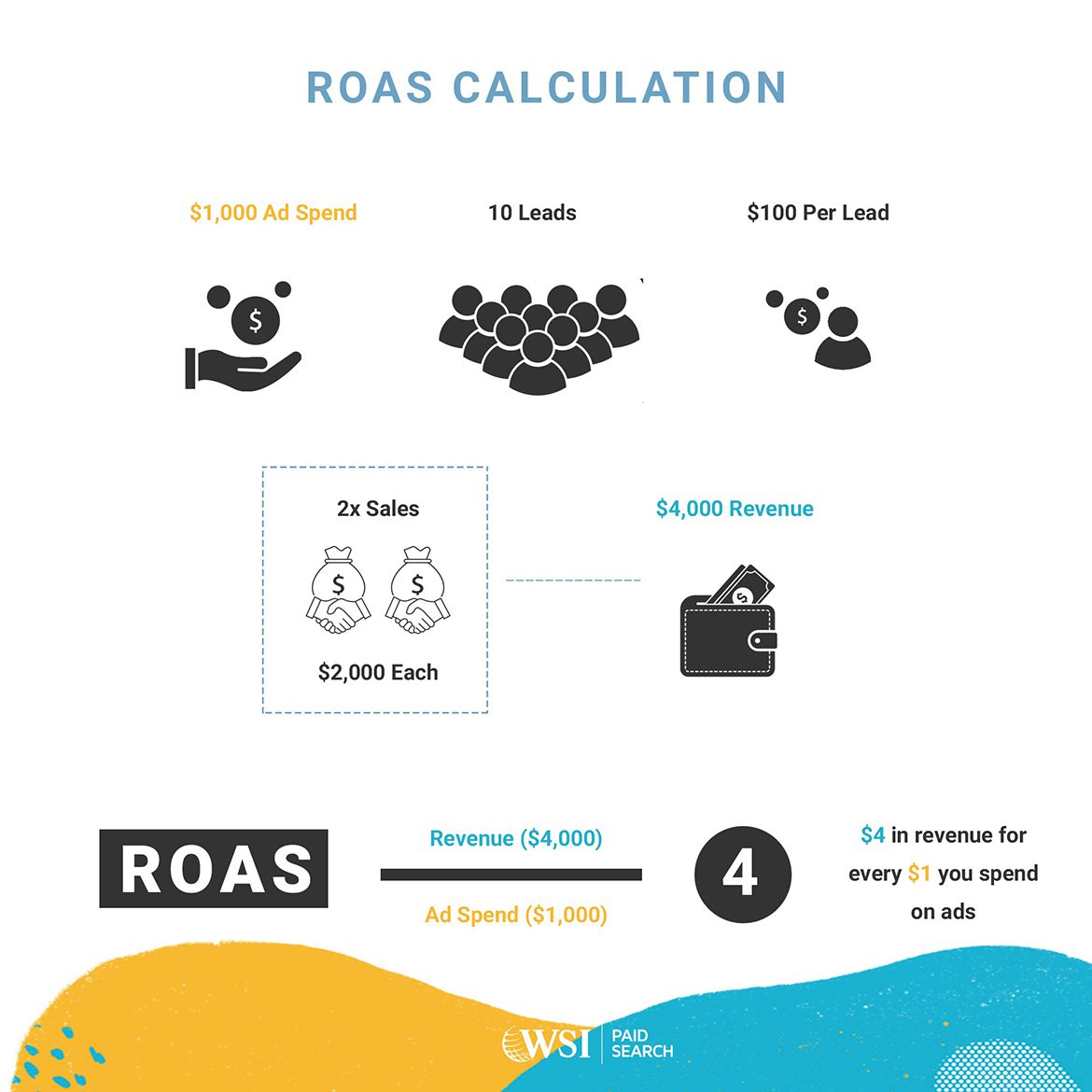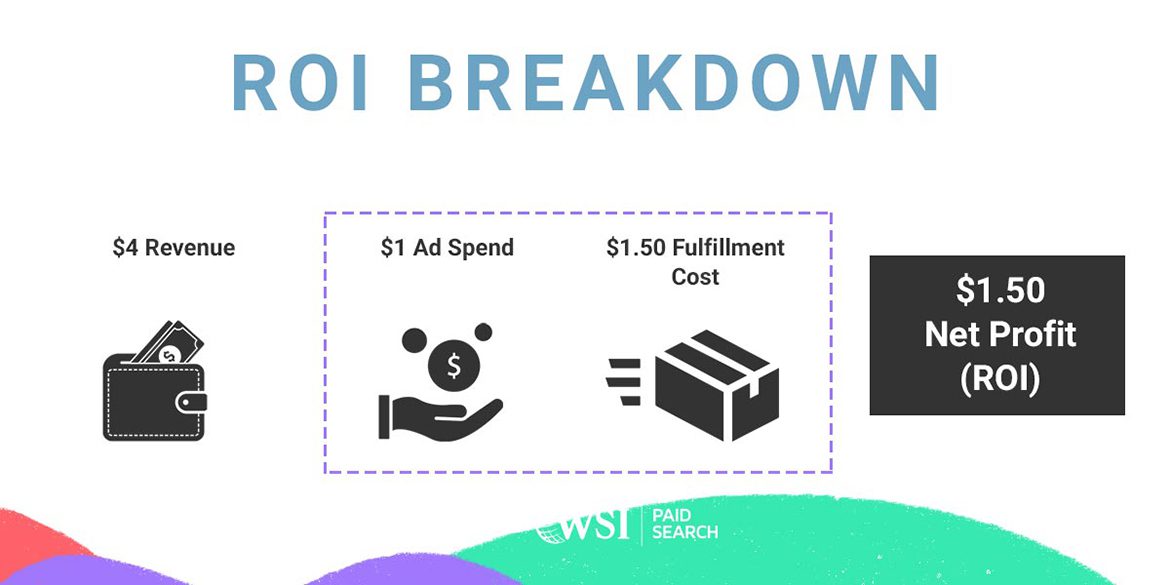Is it time to stop avoiding your ROAS issues?
February 5, 2021 |The online marketing world is full of acronyms and jargon, isn’t it?
More than once, I’ve heard people confidently use acronyms that I’m not sure they understand. Equally, I’ve been guilty of not wishing to admit that I don’t understand what’s being said to me. This social dynamic creates important conversations where no one really knows what’s going on. Just nod and smile, Jack…
ROAS could be one of those confusing acronyms for many business operators and marketers, especially when it’s often and incorrectly used interchangeably with ROI.
Even if the decryption of ROAS (return on ad spend) is understood, how to calculate and evaluate ROAS to inform marketing and advertising decisions remains a grey area for many businesses.
ROAS = Return on Ad Spend
ROI = Return on Investment
ROAS gives you the first indication of what’s going on with your advertising returns.
ROI gives you the detailed bottom-line impact for the business.
This is a problem. If you don’t know what dollars are coming back to you from your advertising investments, you can’t improve!
This article sets out to help you understand and use ROAS in order to maximize your PPC results.
ABC Roofers:
What follows is a quick anecdote about the importance of knowing your ROAS. This is a real story, but the name of the business has been masked.
ABC Roofers is a small business that nearly made the biggest mistake in its history.
After a few months of advertising on Google Ads for commercial roofing opportunities, they emailed us with instructions to halt their advertising campaign and requested a ‘postmortem’ to explain why it was such a ‘flop.’
This led to some raised eyebrows and heartbeats in the office because we don’t like flops. It is possible that an advertising campaign will flop on occasion – we don’t pretend otherwise. But this case was different, and we were sure it wasn’t a flop.
The wonderful thing about advertising is how black and white it is. It either works, or it doesn’t; it’s profitable, or it isn’t. There’s no guessing, and no opinions can mask the truth.
Our PPC reporting system tracks inbound phone calls from advertising campaigns.
We pulled up ABC Roofer’s call log for the past month and, as we expected, found many high-quality inbound leads for commercial roofing opportunities. One was for an embassy building in a major city, and the other was for a household-name brand warehouse that needed a 500,000 square-foot roof replacement. To give some context to this 500,000 square foot opportunity – a football field is approximately 48,000 square feet. This roof was the size of 10.5 football fields. ABC Roofer’s largest previous job was 150,000 square feet, so this opportunity alone would be transformative for their business.
Using an average price per square foot of $10 for commercial roofing, the potential value of this deal was $5,000,000+. The monthly advertising cost was $2,500, and the avg. cost per lead was $160. Whichever way you look at it – the campaign was not a flop and represented an enormous potential for positive ROAS.

ABC Roofers are not alone in this struggle. Most businesses we meet are in it, too.
Were it not for our intervention, ABC Roofers would have cancelled their advertising and missed out on future ten-football-field-sized opportunities.
You need to know your ROAS.
If you don’t, you can’t optimize your campaigns or evaluate their effectiveness.
ROAS vs. ROI:
ROAS gives you the first indication of what’s going on with your advertising returns, and ROI gives you the detailed bottom-line impact for the business.
ROAS = Return on Ad Spend
ROI = Return on Investment
ROAS simply takes the revenue generated by advertising and divides it by advertising cost. You determine the revenue based on your success from leads, known customer lifetime value (LTV), or from your online sales.
ROAS Calculation Example:
- $1,000 ad spend
- 10 leads
- $100 CPL (cost per lead)
- 2 sales at $2,000 value each
- $4,000 revenue
- ROAS = $4,000/$1,000 for 4.0.
- A ROAS of 4.0 means you’re earning $4 in revenue for every $1 you spend.

No-one can tell you if your ROAS is good. Only you can determine this based on your business’ cost of delivery. It is possible to have a positive ROAS but a negative ROI – so don’t let anyone tell you that a ROAS of 2.0, 3.0, or even 10.0 is ‘good’ if it’s not checked against ROI.
ROI is the bottom-line net profit to the business from an investment. It considers all of the expenses beyond advertising to determine if you actually made a profit.
Let’s pull both ROAS and ROI together in an example:
If you have a ROAS of 4.0, you have a $3.00 Gross Profit after $1.00 goes to advertising spend (because you earned $4 for every $1 spent on ads).
Your $3.00 of Gross Profit needs to cover costs of manufacturing, design, customer service, shipping, etc. If the cost of fulfillment is less than $3.00, you have made a Net Profit, which will lead to a positive ROI.
For example, if your cost of fulfillment was $1.50 from your $3 Gross Profit, this leaves $1.50 as Net Profit (ROI).
Total breakdown:
- Revenue: $4.00
- Ad spend: $1.00
- Fulfillment cost: $1.50
- Net profit (ROI): $1.50

If you wish to work out your Net Profit, or ROI, as a percentage, the formula is:
ROI = (Revenue Amount – Investment Amount) ÷ Investment Amount
Remember to include ALL costs in the ‘Investment Amount’ variable of your ROI calculation, not just your advertising costs.
How to measure your ROAS:
Beyond knowing the formulas and calculations, you need to know how to measure your ROAS by getting the right data inputs at the start of it all.
Here is our three-step process for generating ROAS reports that will transform your advertising success:
Step one: Track everything (beyond the click)

Whatever form of PPC advertising you engage in (Google Ads, Facebook Ads, Microsoft Ads, etc.) is trackable.
This means you can track what happened beyond the click. If clicks result in calls, form fills, online transactions, bookings, live-chats, newsletter sign-ups, donations, registrations, or any other form of transaction that you desire a clicker to take, you can track it.
At this point, you will know your lead count and cost per lead or your sales count and cost per sale (e-commerce).
Most of this tracking is built-in to the advertising platforms – all you have to do is configure and install the correct conversion tracking tags. In some cases, you might wish to use a third-party call tracking software such as CallRail.
Step two: Connect Advertising Data with Business Data
This part is CRUCIAL and is the one that most businesses miss.
Knowing that you had conversions isn’t enough. You need to answer these type of questions:
- Which leads convert to sales?
- What was the value of those sales?
- How many times did that customer return for future purchases? Etc.
Additionally, you need to know what campaigns, ad groups, ads, or keywords, drove those specific conversions.
This allows you to trace back business value to advertising initiatives in order to decide whether to check, raise, or fold your advertising campaigns.
This is typically achieved by one or two main methods:
- Connect your advertising platform to your CRM. For example, both Google and Facebook Ads connect to Salesforce.
If there is no native integration between your ad platform and CRM, you can often use Zapier to create the connection.
2. Utilize UTM tags in your destination URLs to pass hidden form-fields to your CRM.
These hidden form fields would include medium, source, and campaign information, for example.
You’ll need to ‘prepare’ your CRM to receive these additional fields. Each one is different, so just reach out to them and ask them for help in formatting your CRM to receive source attribution by lead/customer.
Build out your destination URL tagging using Google’s URL builder.
By doing this, when a lead or customer triggered by your advertising campaigns reaches your CRM, you’ll know what advertising initiative they came from. Once they’re in your CRM, you’ll know their value to you.
Step three: Generate ROAS reports
The final piece of the puzzle is to associate your source-attributed-CRM-data with advertising spend.
For example, your CRM will now tell you:
- Campaign one: 52 leads | 5 sales | $3,000 ATV | $15,000 revenue
- Campaign two: 52 leads | 2 sales | $10,000 ATV | $20,000 revenue
In your preferred form of reporting (can be automated with the right tools or in a sheet), you need to plug in the advertising spend to complete the picture:
Campaign one:
$10,000 spend | 52 leads | 5 sales | $3,000 ATV | $15,000 revenue | 1.5 ROAS
Campaign two:
$10,000 spend | 52 leads | 2 sales | $10,000 ATV | $20,000 revenue | 2.0 ROAS
The above scenario is, of course, simplified. You’d likely drill-down further by campaign ad group, types of sale/customer, single transaction value vs. lifetime value, etc.
Do you see how the picture has changed now? Before having the complete picture, you might think that campaign two sucks because it only had two sales from 52 leads. The average transaction value of campaign two is greater than campaign one, giving it a still-better ROAS!
In this case, you’d likely divert some (or all) budget from campaign one to campaign two in order to generate a better overall ROAS for your business.
You can see how having lead count, cost per lead, and even sales count, are essentially useless and misleading to you unless you have the full picture to illuminate your ROAS.
Closing call:
Ready your axe!
The title of this article asks you, is it time to stop avoiding your ROAS issues?
You probably already knew 90% of what was covered in this article but maybe had some small knowledge gaps to fill or needed to see it all pulled together.
You’ve known about the gaps (or total voids) in your measurement and understanding of ROAS for some time now. It holds you back. It causes frustration. It stunts growth.
My friends, you’ve now had your refresher on advertising ROAS. It’s time to stop avoiding the troll under the bridge.
Take out your axe, slay your issues and figure out your ROAS once and for all.
A whole new world of opportunity, clarity, and confidence in your marketing decision-making awaits you.












